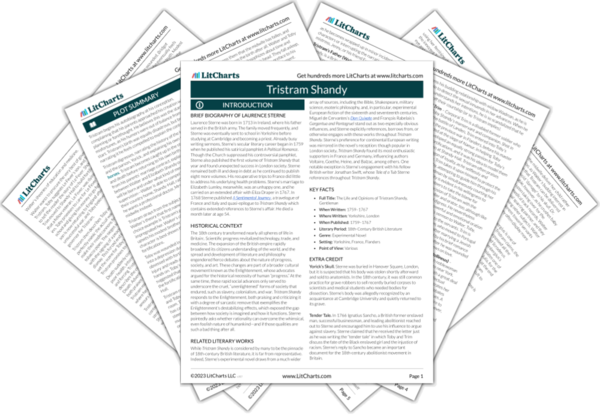Trim’s deep religiosity is humorously interwoven with his soldier’s habits, as he must be commanded in order to recite the commandments. Far from displeasing Yorick, this delights him, as the unconventional parson loves finding religion in the least expected places and most interesting of disguises. Walter’s penchant for dense, theoretical thought is no match for Trim’s common sense either, at least in Yorick’s eyes. Unlike Walter, though Yorick enjoys reading and engaging with esoteric and philosophical arguments, he is ultimately most concerned with the practical consequences of those grand and lofty ideas.
